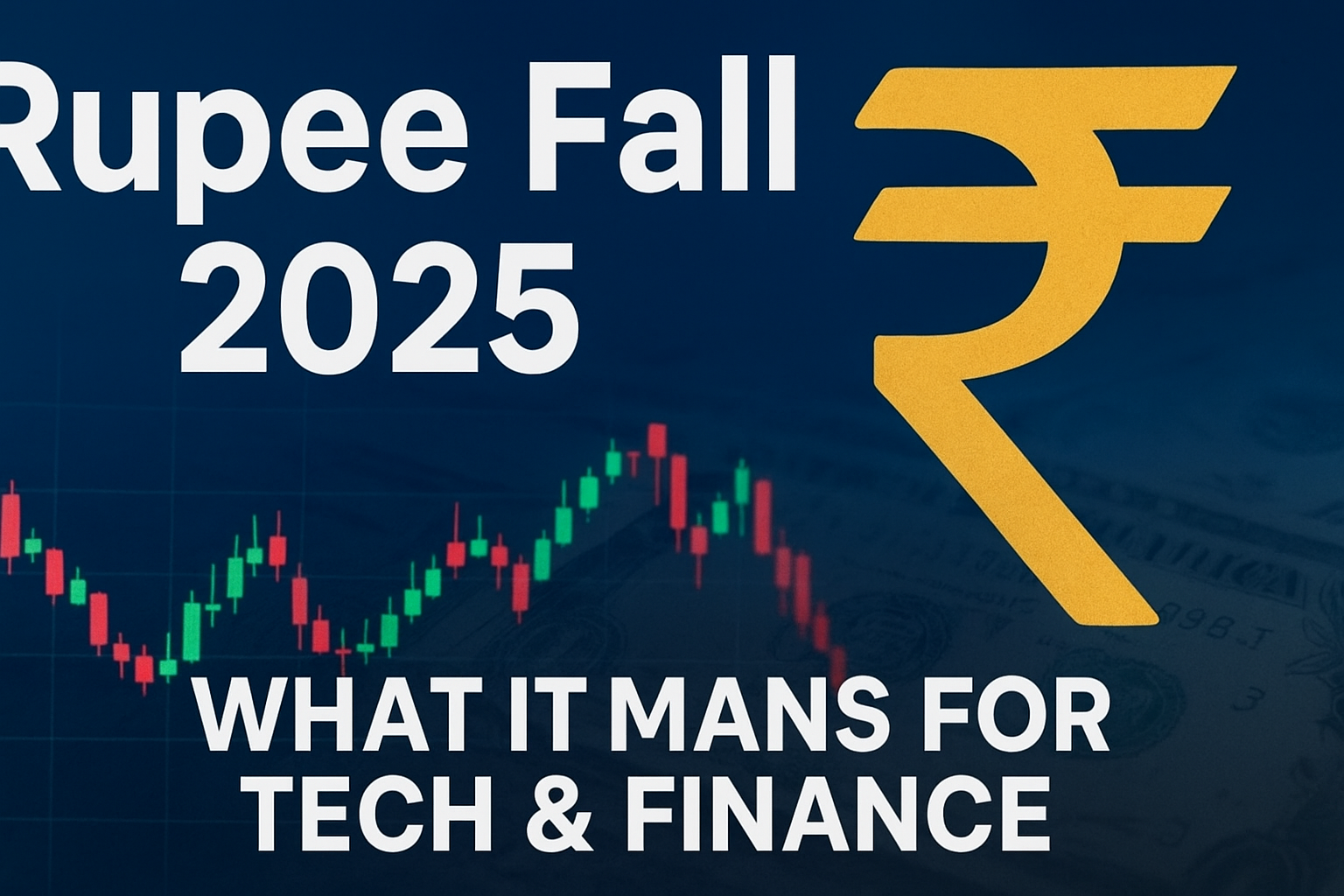On September 29, 2025, the Indian Rupee closed at 88.76 against the US Dollar, marking the lowest level in history. Upon researching further, I found that this fall comes just ahead of the upcoming RBI MPC meeting on October 1, 2025.
In this meeting, RBI primarily reviews repo rate, reverse repo rate, inflation control, currency stability, and banking liquidity. But since the Rupee has already weakened to a record low, markets and investors are keenly awaiting RBI’s stance. Many expect RBI to announce some supportive measures for the economy.
However, based on expert interviews and reports, it appears that RBI is most likely to keep repo rates unchanged. At the same time, some analysts still expect a potential rate cut to boost growth.
In this blog, I will break down the reasons behind the Rupee’s fall, the importance of the RBI meeting, and its impact on the Tech and Finance sectors.
Rupee Depreciation and RBI Policy Impact: A Complete Analysis
Let’s first understand the broader consequences of the Rupee’s fall.
- The depreciation of the Rupee is not just a currency market event – it affects daily life, trade, and the economy at large. A stronger dollar means India has to pay more for imports like crude oil, diesel, electronics, and semiconductor chips. This raises production costs for businesses.
- On the other hand, exporters benefit. For example, when IT service, pharma, or textile exporters convert their dollar revenues into Rupees, they receive higher value. This boosts their earnings.
- But the story isn’t always positive. Higher import costs push inflation upward – fuel, electronics, and essential goods become expensive. This hurts consumers directly. Meanwhile, investors tend to act cautiously during such volatility. Fears of inflation and uncertainty trigger fluctuations in the stock market, especially in banking, fintech, and tech sector stocks.
- Thus, Rupee depreciation is more than a currency fluctuation – it’s closely tied to the economy’s momentum.
Impact on the Tech Sector
This blog explains the rupee depreciation and RBI policy impact on imports, IT exports, fintech, and ordinary citizens.:
- Import-Dependent Companies – India’s tech ecosystem relies heavily on imported hardware such as semiconductors, GPUs, servers, and networking gear from the US, Taiwan, and China. A weaker Rupee makes these imports more expensive, putting pressure on data center projects, cloud infrastructure, and AI hardware budgets. For instance, during the 2023–24 dollar rally, many Indian startups had to delay GPU-based AI projects due to soaring costs.
- Export-Oriented IT Services – In contrast, major IT exporters like Infosys, TCS, and Wipro benefit from this situation. Over 70% of their revenues come in US dollars. When converted into Rupees, the stronger dollar boosts their margins. However, there’s a caveat: if global clients, especially in the US and Europe, cut back on spending, the benefit may be limited.
FinTech and Banking Sector
- FinTech – Currency volatility directly impacts FinTech firms. Companies dealing with cross-border payments and remittances such as Paytm Payments Bank, Wise, PayPal, or Remitly face rising costs. Customers end up paying more for each transaction when the Rupee weakens, as fees and charges increase.
- Banking – The banking sector, on the other hand, is highly dependent on RBI’s policy stance. If the repo rate remains unchanged, stability is maintained. But if RBI opts for a rate cut, lending activity could rise, affecting liquidity. In times of Rupee weakness, RBI often intervenes by selling dollars to stabilize the currency, which in turn influences foreign investor sentiment.
Bond Market Volatility
The bond market is also sensitive to Rupee weakness.
- 10-Year Bond Yields – Investors may demand higher returns, pushing yields upward.
- New Issuances – If volatility persists, investors may prefer safer options like US Treasuries, reducing demand for Indian bonds.
- Cautious Outlook – Many fund managers have already cut their exposure to emerging markets, indirectly affecting India.
My Key Suggestions for Investors
In this environment, investors should carefully consider the following strategies:
- Short-Term Hedging – Companies with high foreign currency exposure should use currency futures or options to manage risks.
- Focus on Stocks –
- IT exporters → Likely to gain from dollar strength.
- Import-heavy hardware companies → May face margin pressure.
- Banking stocks → Sensitive to RBI’s policy decisions.
- Diversification – Allocating funds to gold, bonds, or global ETFs could help reduce risk.
Impact on the Common People
The Rupee’s fall is not limited to corporates; it affects everyday life too.
- Imported Goods – Electronics like mobiles, laptops, and smart gadgets may become more expensive.
- Education and Remittances – Students studying abroad and families sending money overseas will face higher costs.
- Fuel Prices – Crude oil imports could push petrol and diesel prices up, leading to higher transportation and household expenses.
- Travel – Foreign travel becomes costlier when the Rupee weakens.
What Lies Ahead?
The Rupee’s fall cannot be dismissed as a one-day event. Its trajectory depends on global and domestic factors such as:
- US Federal Reserve’s policy stance
- Foreign institutional investors’ (FII) flows
- RBI’s interventions in the currency market
If the dollar strengthens further, the Rupee could face additional pressure. A large-scale FII pullout may trigger more volatility in the stock market. On the flip side, exporters could continue to benefit in the short term.
- The Rupee’s record low is not just a number – it’s a warning signal for India’s economy. Tech firms need to reduce import dependency, FinTechs should update their currency risk policies, and investors must closely track RBI’s next policy meeting. Common people too should plan expenses wisely, as imported goods and fuel prices may rise further.
Sources of Information
While preparing this blog, I studied insights from the following trusted sources:
- Reuters – Global currency markets and central bank actions
- Morningstar – Investment research and bond market analysis
- FinTech Futures – FinTech and digital payments industry studies
- MarketWatch – IT companies and global investment trends


